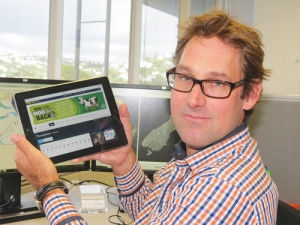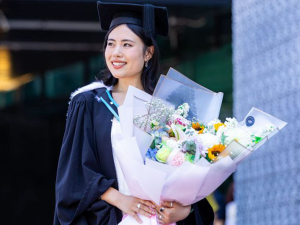The big open-plan office where many MetService forecasters work is dominated by a huge screen showing weather conditions affecting New Zealand.
Manager of forecasting operations Ramon Oosterkamp says the room is divided into three sections: public, marine and aviation. In charge of this area is a senior forecaster who assesses all the data – gigabytes on gigabytes – from overseas including the US, UK, Japan and Australia, plus local information. He/she then forms a view on what the weather is going to do. Other forecasters contribute to this conversation.
But in the ‘good old days’ it was different. Then the senior forecasters were regarded as almost God-like; when he/she gave their interpretation the others just listened and nodded in agreement. This ‘nod’ term has
stuck and the morning synopsis by the senior forecaster is still known as the ‘nodding session’.
New technology, and the vast amount of data coming in hourly, poses a challenge for MetService. Data storage requires very powerful computing and in that regard the organisation’s IT system is not far away from Peter Jackson’s system just across the harbour.
The MetService has always had a positive relationship with farmers and those on the hill in Wellington understand the needs of farmers to get quality, timely, well-presented data that helps in their decisionmaking. Forecasts are available on the MetService website, as is the rain radar.
Oosterkamp says his organisation has a big focus on special weather alerts such as snow storms.
“We have been pretty good at providing those warnings in the last few years and we have had some great feedback from farmers who have been able to move their stock,” he says. “This usually happens around August and September, when they are lambing and need that extra bit of warning. Now we are able to give them two-three days warning.
“Our snow forecast in the last few years has improved vastly on what it was 15 years ago. Realistically we don’t get it right every day, because weather forecasting is an inexact science. We know that somewhere in the country a farmer is affected by that.”
Oosterkamp says MetService tries to work for farmers in tailoring the information they send them so that it is valuable and meaningful. Rather than supplying a whole lot of numbers, they try to package the information in such a way that it’s instantly usable.
“For example, a farmer may want to know the best time to spray effluent. We can provide information that will help in their decisionmaking process and ensure they meet the requirements of the RMA,” he explains.
The other benefit arising from new technology is the ability of forecasters to narrow down the locations where weather events may occur. It’s quite common, says Oosterkamp, for one farm to get rain and a nearby property to get none.
In addition to general forecasts for farmers, MetService provides special services to clients such as FMG and MPI. It has a TV studio where special videos can be recorded to replay on social media. MPI also calls to get data on adverse events such as droughts.
The ongoing challenge for MetService is to meet farmers’ expectations, for which long-range forecasting is crucial. Historically it was able to provide five-ten day forecasts, but now it is looking at monthly, three monthly and even eight month forecasts.
Chief executive Peter Lennox says highly-trained people who can interpret data make a big difference.
“With the training and due diligence we carry out here we have a higher chance of getting things right. But, that said, even with the best forecasters there is always a time when you will get it wrong.
“We stand out, I believe, because we get it wrong fewer times than the others. We have to accept that it is a game of odds, but the odds are pushed more in favour of us getting it correct given the expertise we have here.”



















